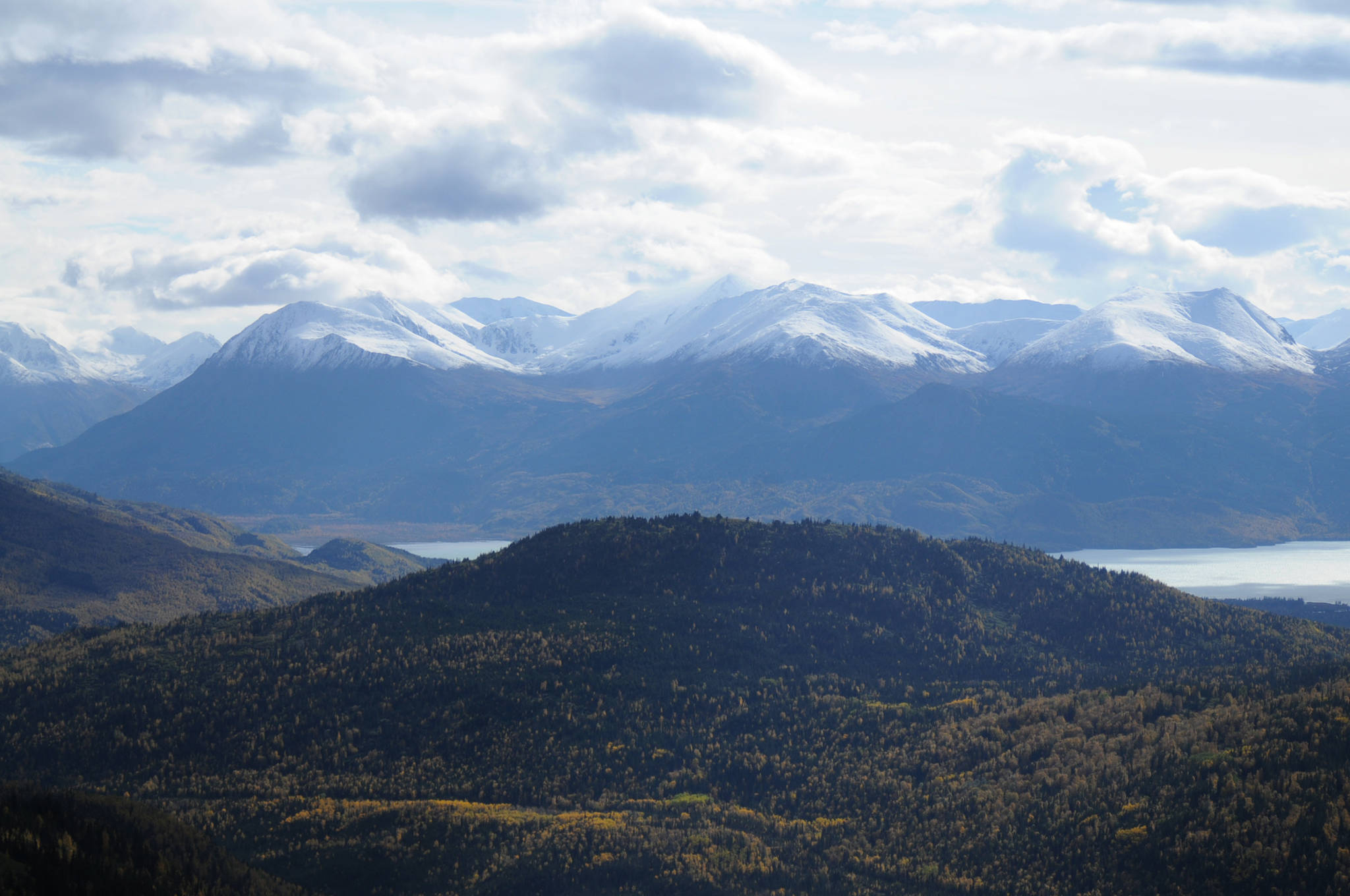Spruce bark beetle activity in Southcentral Alaska has jumped this summer, though it’s not as widespread as it was in the 1990s.
The U.S. Forest Service measured an sharp increase in the number of acres of forest affected by spruce bark beetles between 2016 and 2017, according to a briefing paper published by the U.S. Department of Agriculture. The activity this summer is nearly 30 times what it was in 2014, according to the briefing.
“In 2017, mortality cause by spruce beetles occurred on nearly 450,000 acres,” the paper states. “… On the Kenai Peninsula, trees missed during previous outbreaks were attacked. North of the Kenai, trees were infested where outbreaks have previously been mostly absent.”
The beetles are native to Alaska, same as the spruce trees. The Kenai Peninsula saw millions of trees wiped out by widespread beetle infestations in the 1990s, but the activity has declined since then. But for the first time, trees farther north have been severely affected — forests 200 miles from the typical severe outbreak areas have been impacted, according to the briefing.
Aerial surveys by the Forest Service saw increased activity in the Matanuska-Susitna Valley and on the northern part of the western Kenai Peninsula, in the area along the coast between Point Possession and Boulder Point, according to a map included in the briefing.
The Kenai National Wildlife Refuge doesn’t keep a close eye on spruce bark beetle activity — the Forest Service covers the whole state with aerial surveys — but they have seen increased activity in select areas, said Matt Bowser, the refuge’s entomologist.
“We were seeing trees that were hit quite hard,” he said. “Those were the forests that weren’t hit so hard in the last outbreak.”
A run of warm, drier summers created better conditions for the beetles, he said. Spruce trees actually have a ready defense mechanism against the bugs — when they’re being invaded, the trees secrete sap, which traps and kills the beetles. However, when it’s hot and dry and the trees are water-stressed, they have a harder time producing sap and thus become more vulnerable to large beetle attacks.
Bowser said surveyors last summer saw many spruce trees with spruce bark beetles in the layer of tissue between the bark and the sapwood. Once the beetles eat that layer, the trees have no way to get photosynthesized sugars back to their root systems and the roots die, taking the tree with it. There’s a lag, though, between when the beetles attack and the trees begin to show it, so the effects of the last year or two would show up this summer, Bowser said.
“Last summer we were seeing trees just riddled by beetles,” he said. “We were seeing trees with their phloem tissue (the layer between the bark and the wood) riddled with beetles and it was basically dead, but it hadn’t died yet.”
It’s nothing new — spruce bark beetles are native to Alaska, as are the spruce trees. Spruce trees survive better in cooler, wetter climates, but when the climate shifts to be drier and warmer, the trees are less prepared to defend themselves. Beetles tend to target the oldest, largest spruce trees, Bowser said. Dry, warm springs are also good conditions for beetles to reproduce.
The USDA briefing states that the 1990s outbreak on the Kenai Peninsula was so widespread that it impacted all ecosystems across the affected areas, from wildlife habitat to flood control and nutrient cycling. Research at the time and in the years following by biologists both at the Kenai National Wildlife Refuge and nationally identified the outbreak as directly connected to climate change. In the years following the 1990s outbreak, the beetles swept through British Columbia and in other areas of the western United States.
“Needless to say, the current spruce beetle outbreak has the potential to expand and intensify and have an immense impact on the values held by people living in Alaska,” the briefing states.
The beetle usually attacks Sitka, Lutz and white spruce but only rarely attacks black spruce, according to the University of Alaska Fairbanks Cooperative Extension Service. Trees that have been attacked will have reddish brown dust from the beetles’ entrance holes, which will fall around the base of the tree and have resin near the holes. Sometimes the best option is for landowners with spruce trees that may have been attacked is to remove trees, according to the Cooperative Extension. Bowser recommended calling the Forest Service or the Alaska Division of Forestry to confirm a beetle attack before felling trees.
Reach Elizabeth Earl at elizabeth.earl@peninsulaclarion.com.

